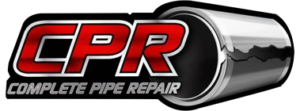CIPP Lining Guide for Dayton Sewer Repair
When sewer pipes develop cracks, bellies, or minor root intrusion, widespread excavation isn’t always necessary. CIPP (cured‑in‑place pipe) lining creates a seamless, jointless new pipe within the existing one—minimizing yard disruption and restoring flow. In this post, we’ll explain how CIPP works, why it’s ideal for Dayton homes, and what to expect from the trenchless repair process.
1. What Is CIPP Lining?
CIPP lining involves inserting a resin‑saturated fabric sleeve into the damaged pipe. Once in place, the sleeve is inflated and cured—typically with hot water or steam—transforming it into a rigid, corrosion‑resistant liner that bonds to the host pipe’s interior.
- No Open‑Trench Excavation: Works through access points (clean‑outs), leaving landscaping and hardscapes intact.
- Versatile Application: Suitable for cast‑iron, clay, PVC, or concrete pipes between 4″ and 24″ in diameter.
2. Benefits Over Traditional Repair
- Minimal Yard Disruption
No need to dig a continuous trench—only small pits at entry and exit points. - Faster Completion
Many jobs finish in a single day, with full return to service shortly after curing. - Extended Lifespan
A properly installed CIPP liner can last 25–50 years. - Improved Flow & Sealing
Jointless design eliminates leaks at old connections and resists future infiltration.
3. Ideal Candidates for CIPP
- Pipe Bellies & Sagging Sections
When a sewer line dips below grade (a “belly”), wastewater pools and solids settle—leading to clogs. CIPP restores a consistent slope without excavation. Learn more in our post on sewer line bellies: causes & fix. - Small Cracks & Joint Leaks
Resin seals fractures and voids, stopping groundwater infiltration. - Root Intrusion
Eliminates hairline root breaches; paired with hydrojet cleaning, it prevents re‑growth.
4. Step‑by‑Step CIPP Process
- Video Inspection
A camera survey identifies damage locations and measures pipe dimensions. - Pipe Preparation
Hydrojet or mechanical cleaning clears roots, scale, and debris to ensure liner adhesion. - Liner Installation
The resin‑soaked sleeve is inserted and positioned using an inversion drum or winch. - Curing
Hot water, steam, or UV light activates the resin. Curing time varies from 30 minutes to a few hours. - Final Inspection
A post‑cure camera pass confirms liner integrity and checks for any remaining defects.
For a detailed overview of trenchless pipe repair, see our guide on what to expect with trenchless repair.
5. Cost Considerations
While CIPP’s upfront cost can exceed simple spot repairs, its long lifespan and minimal landscaping damage often yield lower overall project expenses compared to open‑cut replacement. Factors affecting price include pipe length, diameter, and access requirements.
6. Maintenance & Longevity
- Routine Cleaning
Hydrojet cleaning every 12–24 months helps preserve liner flow capacity. - Annual Inspections
Periodic video surveys ensure the liner remains intact and spot any emerging issues.
Ready to Upgrade Your Sewer Line?
If your Dayton home’s sewer line shows signs of cracking, sagging, or root invasion, CIPP lining is the efficient, trenchless solution. Contact CPR for Pipes to schedule a video inspection and learn how we can restore your sewer system without tearing up your yard.
Contact us or call 937-703-1811 to learn more.
